The specialized curriculum nurtures thinking ability in keeping with each child's interests and abilities.
Mathematics(Grades 1 to 6)
The thinking process is emphasized and diagrams and number concepts are used to increasing thinking ability in a logical way.
With arithmetic problems that challenge new ways of thinking, based on children's own experiences and information, thinking ability is logically expanded. The emphasis is more on how their thinking developed rather than on answers being right or wrong.
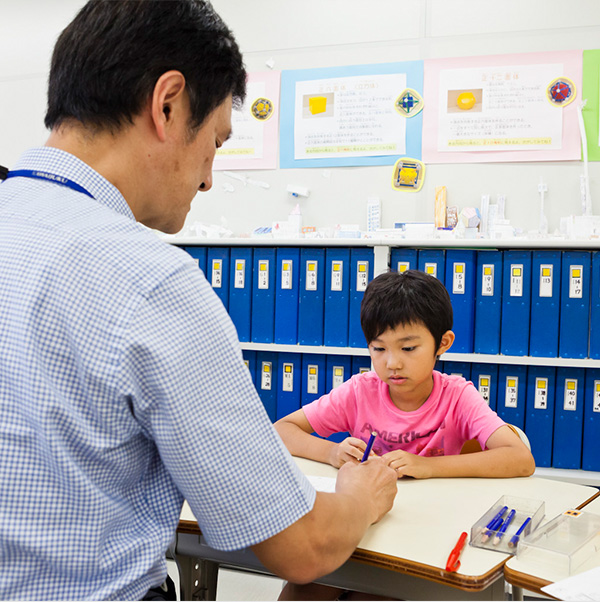
Science(Grades 1 to 6)
Science is studied individually, with classes centered on a hypothesis-based experiment format: hypothesize, experiment, conclude and apply.
Children conduct experiments individually. The hypothesizing, experimenting, concluding and applying processes advance the children's understanding and thinking about rules and principles. In addition, by having firsthand experiences, understanding comes more smoothly and intellectual interest in science is heightened.
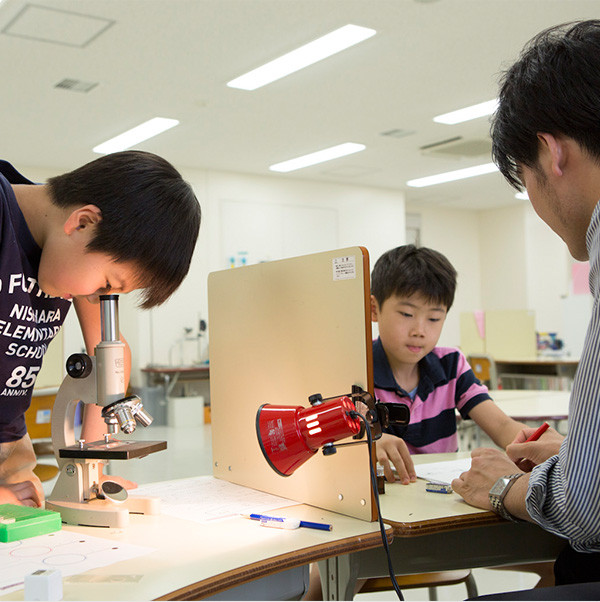
Laboratory(Grades 1 to 4)
Flexible thinking and creativity, the foundations of learning,are expanded here.
Topics in Japanese language, arithmetic, science, social studies are taken up, and assignments are created in three areas of intelligence: visual, symbolic and semantic. Children develop the ability to think coherently under new circumstances and to open up new directions. Games and puzzles that utilize what they have learned help their understanding penetrate more deeply.
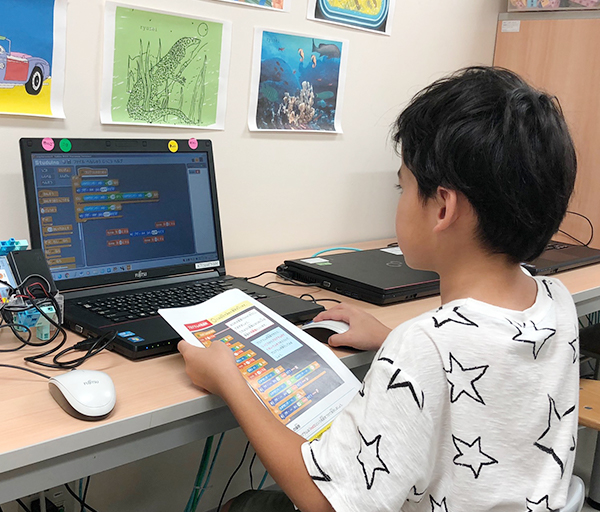
Writing(Grades 1 to 6)
Children experience the joy of writing and strengthen their ability to compose text.
Making use of the things they are interested in and familiar themes, children experience the joy of creating by freely presenting their own ideas and thoughts. They expand their thinking by exchanging opinions and engaging in questions and answers. While valuing the process of deepening their understanding, drawing conclusions and expressing their ideas in writing, they cultivate the ability to express themselves in writing.
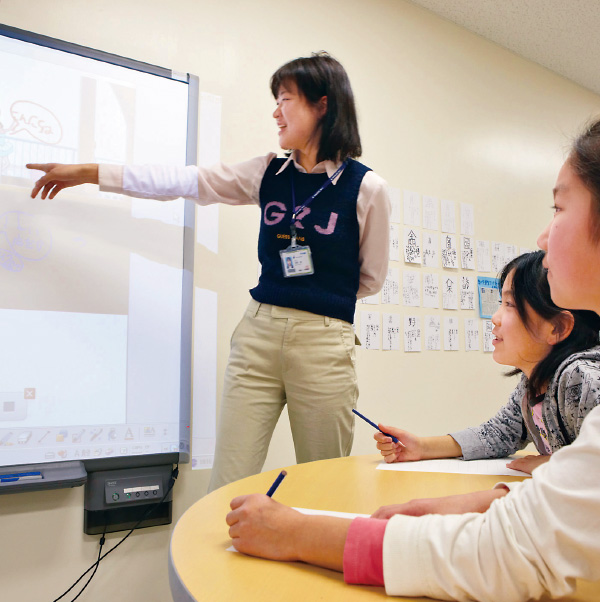
Reading(Grades 1 and 2)
Children develop reading comprehension anddeepen their understanding of the particulars of language.
By reading books aloud and engaging in creative activities based on their content, children develop their reading comprehension. In addition, with assignments that include puzzles and games, children are able to enjoy learning the particulars of language.
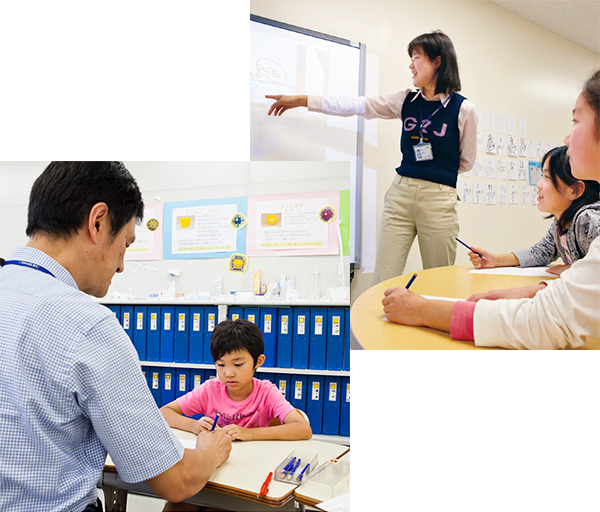
Art(Grades 1 to 6)
Children freely select subjects and engage in creative activities, expanding their ability to express themselves.
They enjoy working on creative activities that they themselves select from a wide range of artistic options, including painting, woodworking, printmaking, ceramics, working with clay and collaging. While valuing the children's interests and concerns, advice that is tailored to them as individuals is given, heightening their ability to express themselves.
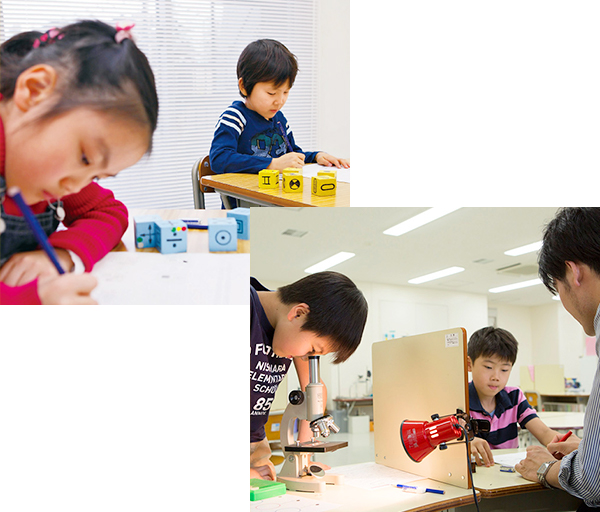
Social Studies(Grades 1 to 6)
By means of their own surveys, productions and reports, children come to understand the structure of the society.
The objective is to nurture children' s ability to think about how society works by having them take up topics related to social studies, report their findings from field trips, and engage in game- and model-making activities.
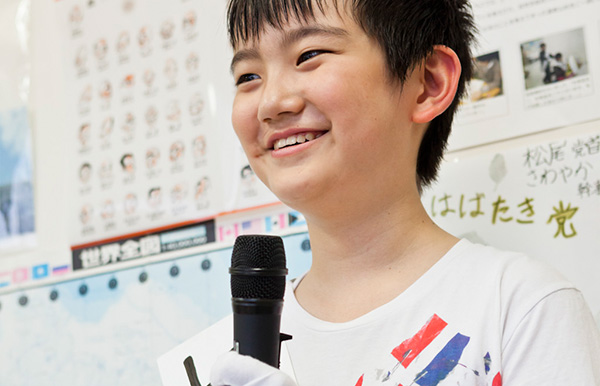
Robotics Computer(Grade 1 to 6)
Experience the fun and excitement of robotics and programing.
Aimed at developing a stronger foundation of thinking and logic, we will incorporate the use of “Stadino”, a microcontroller board, blocks by Artec, and other motors, sensors and various mechanisms.

Mathematics & Writing(Grade 1 and 2)
A mathematics and writing course especially designed for lower elementary children aims to study both subjects in a balanced approach.













